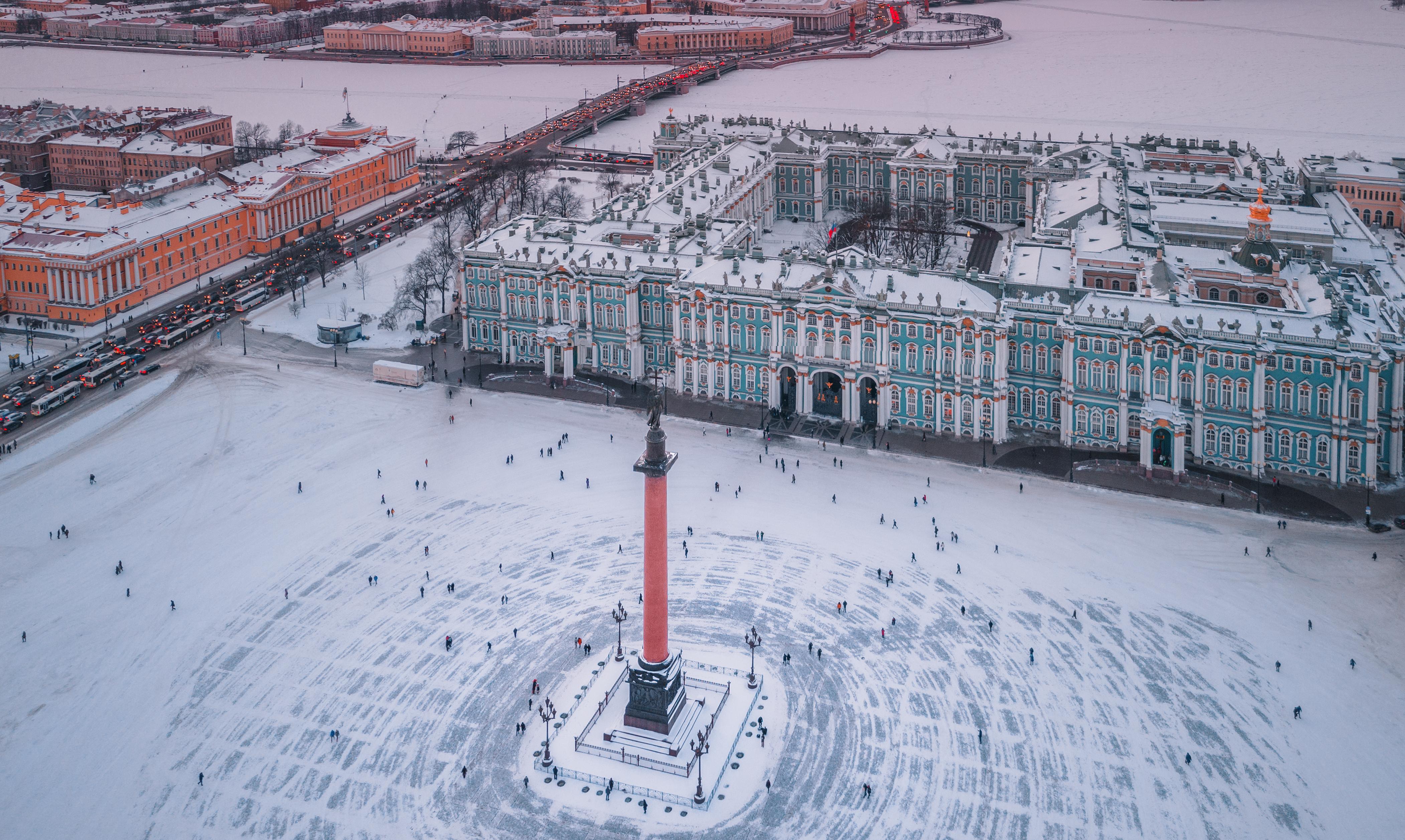 Back
Back
Palace Square

Dvortsovaya sq.
Palace square is the central city square of St. Petersburg.
The square is located at an important intersection of Nevsky Prospect, one of the city’s main arteries, and Palace Bridge, which provides access to Vasilyevsky Island. Palace Square took shape over the span of 89 years with the contribution of some of St. Petersburg’s most masterful architects, such as Francesco Rastrelli and Carlo Rossi. Watershed moments in Russian history, such as the First Russian Revolution of 1905 and the October Revolution of 1917, broke out on the square. From 1923 until 1944, Palace Square was renamed Uritsky Square in memory of Moisei Uritsky, head of the Petrograd Cheka, who was assassinated on the square in 1918. During World War II it was proposed to transform Palace Square into an airfield, but the square and its surrounding ensemble survived to this day untouched.
When the Admiralty Shipyards were built in 1704, the area where Palace Square now lies was just a large open space, designed to accommodate the artillery troops in the event of war with Sweden. But once the Admiralty ceased to be a military fortress, it was decided to cover the square in grass – a place then known as Admiralty Meadow was used for livestock, markets and imperial festivities.
Palace Square during the Soviet era wasn’t all doom and gloom. A game of “Live Chess” was organized there in 1924, with sailors in white and soldiers in black performing as the “chess pieces”. After 5 hours, the game ended in a draw.
Among the landmarks of the square there is the Winter Palace – a white and turquoise masterpiece of Baroque architecture. The palace houses the main building of the Hermitage Museum, one of the most important museums in the world, which displays a collection of over three million works of art. The building stretches over 700 feet (215 metres) along one side of Palace Square and it has witnessed some of the major chapters in the history of St. Petersburg. In 1753, Francesco Rastrelli put forward a project for Palace Square, founded on his final version of the Winter Palace. Construction works began in 1766; the palace acquired the look we are familiar with today, and eventually lent its name to the square.
Rising in the center of Palace Square is the impressive Alexander Column. Being over 155 feet (47 meters) tall and weighing 700 tons, the column is the largest of its kind in the world. Crowning the red granite triumphal column is a statue of an angel holding a cross. Alexander Column is a magnificent monument to Russian victory over Napoleon. During its construction, many locals doubted that it would keep balance under its own weight alone.
The General Staff Building, erected between 1819 and 1829 in an elegant neoclassical style, stands out for its enormously long curved portico connected by a grand triumphal arch with majestic sculptures of a horse-drawn carriage on top. The Triumphal Arch was built following the defeat of Napoleon’s forces by the Russian army in 1812. The arch that faces the square was decorated with a relief ornament depicting crowns and military insignia. At the top it was crowned with a chariot, driven by Nike – the goddess of victory.
Palace Square is a UNESCO World Heritage Site, the heart of Russian culture and history, and home to some of the city’s most famous attractions. No trip to St. Petersburg would be complete without a visit to this square.




 Listen
Listen  Download
Download